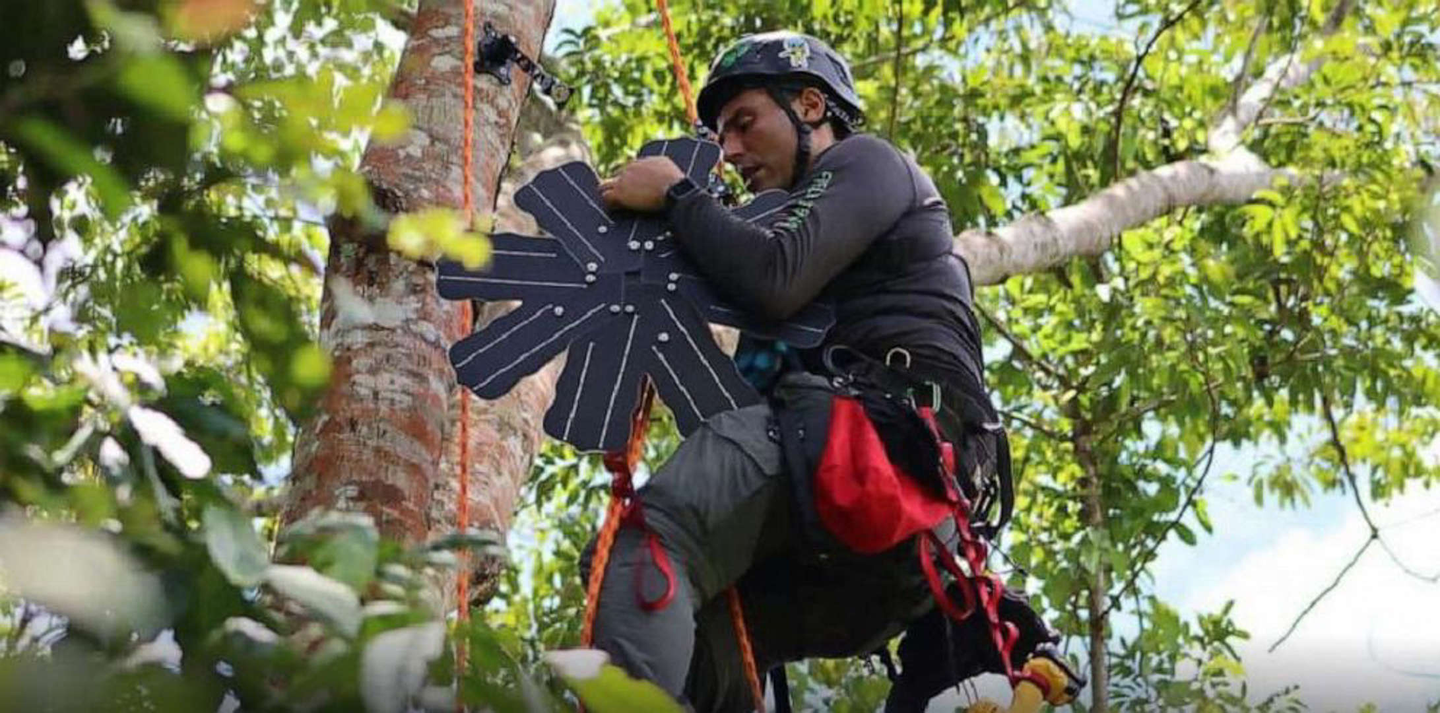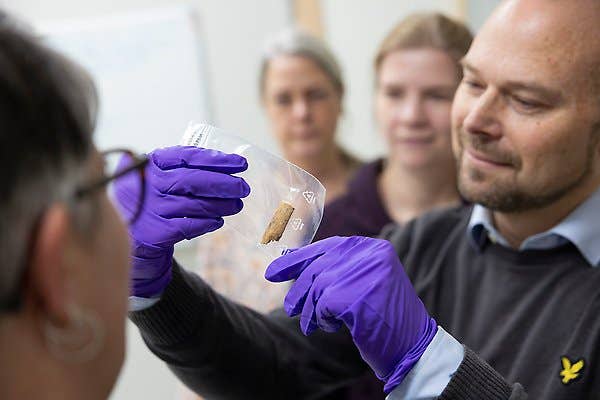Scientists are using AI to save rainforest species
In a time when the world’s rainforests are sounding alarms, the echoes of hope are being amplified by a surprising ally: AI.

[Oct. 3, 2023: Staff Writer, The Brighter Side of News]
Recorders called guardians are equipped with long-range capture technology and placed at the tops of tree canopies to record sounds for bioacoustics research. (CREDIT: Rainforest Connection)
In a time when the world's rainforests are sounding alarms, the echoes of hope are being amplified by a surprising ally: artificial intelligence (AI).
In a collaboration that reimagines conservation efforts, environmental nonprofit Rainforest Connection and Google.org, Google's philanthropic arm, are pioneering a way to use AI in monitoring and conserving threatened species.
AI: The New Sentinel for Endangered Species
"Thanks to AI, we now have the capacity to analyze hundreds of thousands of recordings," said Bourhan Yassin, CEO of Rainforest Connection. Highlighting the revolutionary nature of this technology, he added, "What once took a dedicated scientist four and a half months to process for just one species, we now accomplish in mere seconds."
Puerto Rico Island-Wide: This is a collaboration between RFCx, DRNA, U.S. Fish and Wildlife and Para La Naturaleza with the main goal to create detailed species distribution maps for birds and anurans across Puerto Rico and its associated islands. (CREDIT: Arbimon)
Chosen as the inaugural site for this tech-powered conservation was Puerto Rico's rainforest. The team deployed an open-source AI platform named Arbimom. Designed to monitor biodiversity through sound, this cutting-edge tech amassed an astounding 7.7 million recordings from over 900 diverse sites. Their goal? To pinpoint the locations of endangered species like the Elfin-woods warbler and the Mountain Colqui tree frog.
Puerto Rican Parrots: A Case Study in AI-powered Conservation
But the AI's scope wasn't limited to tracking and data. The U.S. Fish and Wildlife Service recognized the power of this innovation and enlisted Rainforest Connection's help. Their mission? To identify optimal release sites for the endangered Puerto Rican parrots, a species tragically reduced to fewer than 700 individuals.
Rainforest Connection innovated by installing 'guardians'—recorders with impressive long-range capture tech—above the forest canopies.(CREDIT: Rainforest Connection)
"Over the last decade, these parrots underwent extensive rehabilitation," Yassin shared. "Last year, in a massive conservation effort, dozens were released into the Maricao State Forest and El Yunque National Forest. This was especially crucial as Hurricane Maria in 2017 had ravaged these forests, the parrots' primary habitat."
The mechanism behind this massive effort is fascinating. Supported by a grant from Google's AI for innovation, the project employs bioacoustics, a science centered on the sounds of biological activity. Rainforest Connection innovated by installing 'guardians'—recorders with impressive long-range capture tech—above the forest canopies. "These guardians operate 24/7, connecting to satellite and GSM networks, broadcasting the very heartbeat of the forest in real-time," Yassin revealed.
Puerto Rico's climate narrative is shifting under the effects of climate change. (CREDIT: Rainforest Connection)
But that's not all. Another set of cost-effective recorders were strategically positioned lower, beneath the canopy, to amass "in-between data". This colossal dataset is then fed to Arbimom, unlocking insights about species behaviors, endemic species dynamics, and even indicators of invasive species. Beyond ecological insights, this system can also detect unauthorized logging, shining a light on illegal activities that threaten these fragile ecosystems.
Climate Change's Toll on Puerto Rico
"Puerto Rico's climate narrative is shifting under the effects of climate change," warned Yassin. The team's meticulous research corroborated these concerns, finding that climate change is pushing numerous species to migrate to higher altitudes. Moreover, the changing patterns are shrinking the protected zones and habitats that can support birdlife, emphasizing the need for expanded, interconnected safe zones.
Related Stories:
"Through our findings, we were able to make grounded recommendations that could be actioned by those who can effect real change," Yassin reflected on the impact of their work.
Armed with the insights from this initiative, local NGOs like Para la Naturaleza are collaborating with the U.S. Fish and Wildlife Service and Puerto Rico's Departamento de Recursos Naturales y Ambientales to sculpt new protection zones tailored for species most in need.
Rainforests: The World's Lungs in Peril
Rainforests, often dubbed the lungs of our planet, are repositories of over half of the world's vertebrate species and play a critical role in carbon sequestration. But their decline is staggering. 2020 alone saw the disappearance of rainforest land equating to Israel's size, a study by Amazon Conservation highlighted. 2022 was even grimmer, with a 10% spike in tropical forest losses compared to the previous year, as noted by the World Resource Institute.
A Mountain Colqui of Puerto Rico. (CREDIT: Getty Images)
"The ongoing loss of crucial species is an urgent reminder of the fragile health of these forests," Yassin commented.
Biodiversity: A Key Pillar in Climate Action
More than ever, climate scientists are endorsing biodiversity protection as paramount in the fight against climate change. AI's increasing accessibility is a boon, equipping researchers with tools to mitigate climate impacts, from monitoring melting permafrost in the Arctic to safeguarding global food chains and marine health.
Dense foliage in the El Yunque Rainforest, Puerto Rico. (CREDIT: Tony Arruza/Getty Images)
This bioacoustic methodology, harnessed with AI, holds promise for replication across diverse global soundscapes, ensuring conservation efforts resonate louder and clearer.
Brigitte Hoyer Gosselink, director of product impact for Google.org, summarized the endeavor's significance, saying, "This is a sterling testament to the possibilities AI can unlock when wielded responsibly and innovatively."
In an era where technology often bears the brunt for environmental degradation, projects like these signal a promising union of tech and ecology, where innovation doesn't just drive progress but also conservation.
For more environmental news stories check out our Green Impact section at The Brighter Side of News.
Note: Materials provided above by The Brighter Side of News. Content may be edited for style and length.
Like these kind of feel good stories? Get the Brighter Side of News' newsletter.



